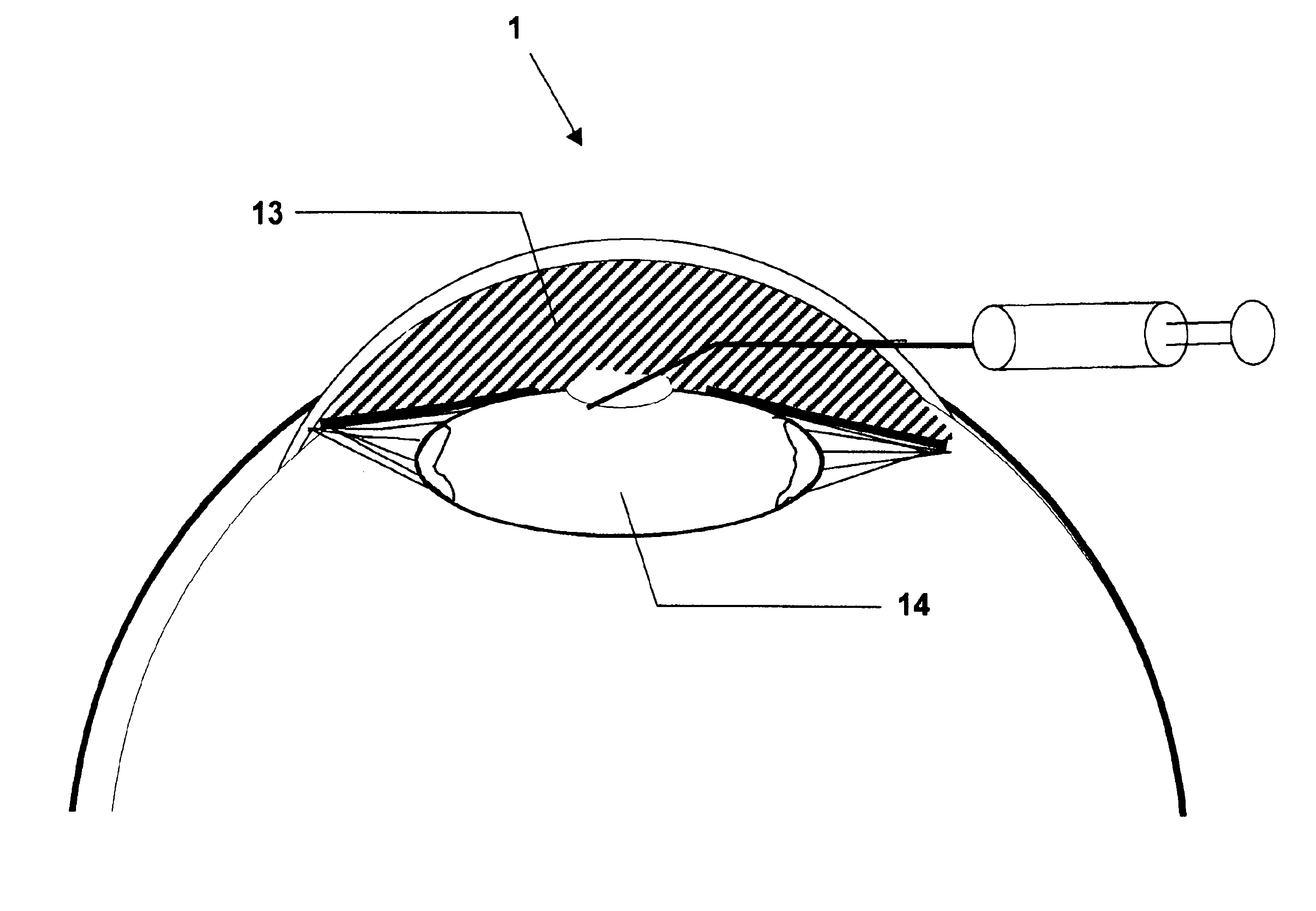Methods and compositions usable in cataract surgery
a cataract surgery and composition technology, applied in the field of cataract surgery, can solve the problems of severe visual impairment or vision loss, decrease the quality of life, and loss of visual ability, and achieve the effect of facilitating access to the interior of the capsul
- Summary
- Abstract
- Description
- Claims
- Application Information
AI Technical Summary
Benefits of technology
Problems solved by technology
Method used
Image
Examples
example 1
Evaluation of a Preferred Embodiment of the Invention
[0190]Cataract surgery was simulated in porcine cadaver eyes An eye was fixed on a plastic holder while maintaining a standardized intraocular pressure of 10-15 mm Hg before surgery. Further details of the model are published elsewhere (Holmen J B, Ekesten B & Lundgren B (2001) Anterior chamber depth estimation by Scheimpflug photography. Acta Ophthalmol Scand Vol. 79:576-579.) The example was performed as follows:[0191]1) A corneal incision 11 was performed at the limbus of the cornea 3.[0192]2) The anterior chamber 5 was filled with a viscoelastic solution 13 (Healon5, Pharmacia AB, Uppsala, Sweden) by injection.[0193]3) A continuous circular capsulorhexis was created.[0194]4) Phacoemulsification was performed by an anterior segment operating system (Oertli Quinto, Oertli Instrumente A G, Berneck, Switzerland) with complete removal of the cataractous lens 10.[0195]5) Additional viscoelastic solution 13 (Healon5) was injected int...
example 2
[0207]Example 2 was performed using the method described in Example 1, except for using trypan blue instead of fluorescein in the agent solution. The distribution of the active agent solution 15 was studied by free preparation of the lens capsule 8.
The results were equal to the ones in Example 1
example 3
[0208]Example 3 is performed using the method described in Example 1, but using a plurality of known active substances in the agent solution, e.g. doxorubicin, EDTA, indomethacin, 5-fluorouracil (5-FU), FGF-saporin, methotrexate, mitomycin, colchicine or daunomycin / daunorubicin.
PUM
 Login to View More
Login to View More Abstract
Description
Claims
Application Information
 Login to View More
Login to View More - R&D
- Intellectual Property
- Life Sciences
- Materials
- Tech Scout
- Unparalleled Data Quality
- Higher Quality Content
- 60% Fewer Hallucinations
Browse by: Latest US Patents, China's latest patents, Technical Efficacy Thesaurus, Application Domain, Technology Topic, Popular Technical Reports.
© 2025 PatSnap. All rights reserved.Legal|Privacy policy|Modern Slavery Act Transparency Statement|Sitemap|About US| Contact US: help@patsnap.com



